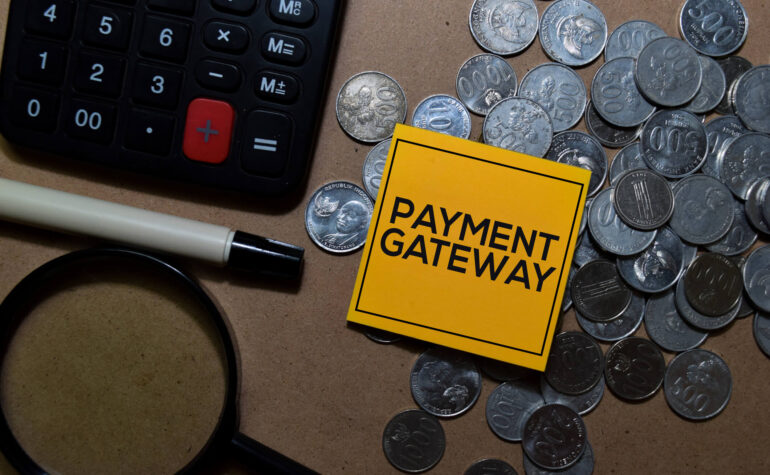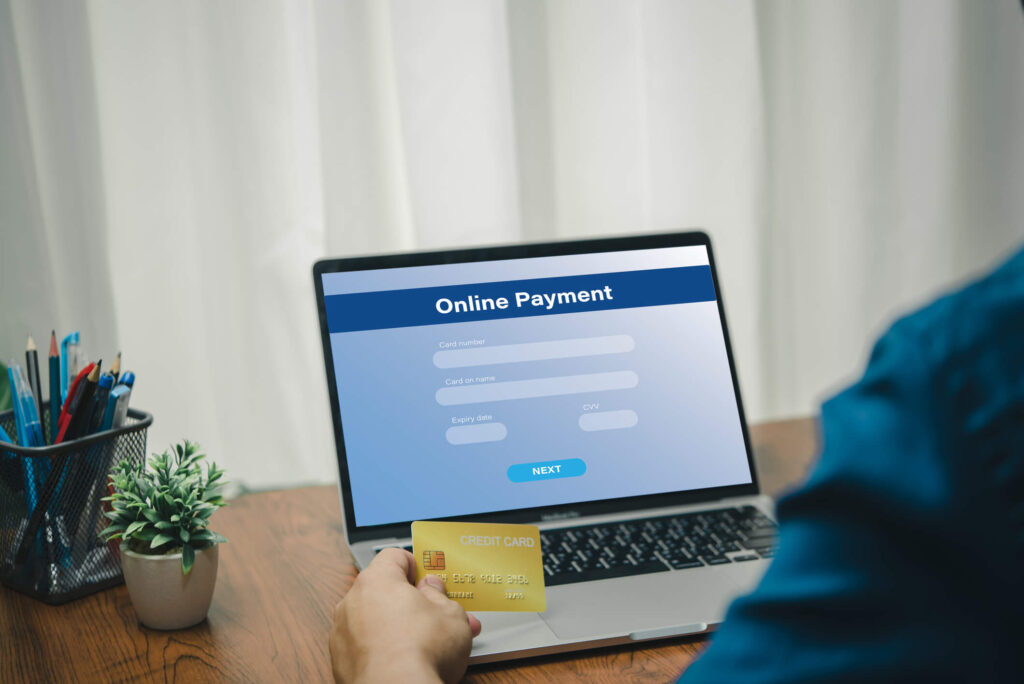Best Credit Card Processing Solutions Tailored for Every Industry

By admin April 21, 2024
Whether it’s purchasing goods or services, making donations, or subscribing to online platforms, the need for a secure and efficient payment system is paramount. This is where payment gateways come into play. A payment gateway is a technology that enables the transfer of funds between a customer and a merchant securely and conveniently. In this article, we will delve into the world of payment gateways, exploring their role in online transactions, the different types available, key features and benefits, security measures, the step-by-step process of how they work, integration into e-commerce platforms, choosing the right payment gateway for your business, common challenges and solutions in implementation, and future trends and innovations in payment gateway technology.
The Role of Payment Gateways in Online Transactions

Payment gateways act as a bridge between the customer, the merchant, and the financial institutions involved in the transaction. They facilitate the authorization and processing of online payments, ensuring a seamless and secure experience for both parties. When a customer makes a purchase online, the payment gateway encrypts the sensitive payment information and securely transmits it to the merchant’s acquiring bank. The acquiring bank then forwards the transaction request to the customer’s issuing bank for approval. Once the transaction is approved, the payment gateway notifies the merchant, allowing them to complete the transaction and deliver the goods or services to the customer.
Exploring the Different Types of Payment Gateways
There are various types of payment gateways available in the market, each catering to different business needs and requirements. The most common types include hosted payment gateways, self-hosted payment gateways, and API-based payment gateways.
1. Hosted Payment Gateways
Hosted payment gateways direct your customers away from your site’s checkout page. When the customer is ready to pay, they are redirected to the payment service provider’s platform, where they enter their payment details and complete the transaction before being sent back to your site. This method is advantageous because it minimizes the PCI compliance requirements for the merchant, as all payment data is handled by the service provider. Popular examples include PayPal and Stripe.
2. Self-Hosted Payment Gateways
In self-hosted gateways, the transaction data is collected within the merchant’s own website. The merchants collect payment information from their customers through their interface and send it to the payment gateway’s URL. Some gateways require the payment data to be sent in a specific format while others require a hash key or a secret key. This type requires the merchant to handle and protect payment data, which means compliance with PCI DSS is necessary. Examples include custom implementations provided by banks or financial institutions.
3. API Hosted Payment Gateways
API hosted payment gateways allow the merchants to integrate the payment gateway’s API directly on their site or mobile app. This type of gateway enables a seamless customer experience, as the customer can complete the purchase without leaving the merchant’s website or app interface. It offers greater control over the user experience but comes with increased security responsibilities. Gateways like Stripe and Braintree exemplify this model, offering robust APIs for various platforms.
4. Local Bank Integration
Local bank integration gateways are a type of hosted gateway where the transaction is redirected to the bank’s website, where customers make their payment. After the transaction is completed, the customer is redirected back to the merchant’s website with the transaction status. This is commonly used by regional banks and is popular in specific geographic locations.
5. Direct Post Payment Gateways
The Direct Post method involves posting data directly from the checkout form to the gateway’s endpoint while bypassing the merchant’s servers. This helps reduce the PCI compliance requirements since sensitive data does not pass through the merchant’s systems. However, it still allows the merchants to control the checkout user experience to a significant extent.
6. Platform-Based Payment Gateways
These are integrated into ecommerce platforms like Shopify, BigCommerce, and Magento. They offer a streamlined setup process as they are pre-configured to work seamlessly with the platform. The gateway provides a consistent, secure, and optimized checkout experience tailored to the platform’s standards, with easy implementation features that are attractive to small and medium-sized businesses.
Key Features and Benefits of Payment Gateways
Payment gateways offer a range of features and benefits that make them essential for online businesses. Some key features include:
- Multiple Payment Options: Payment gateways support various payment methods, including credit cards, debit cards, digital wallets, and bank transfers. This allows merchants to cater to a wide range of customers and increase conversion rates.
- Fraud Prevention: Payment gateways employ advanced fraud detection and prevention measures to protect merchants and customers from fraudulent transactions. These measures include real-time transaction monitoring, address verification, card verification value (CVV) checks, and 3D Secure authentication.
- Recurring Billing: Many payment gateways offer recurring billing functionality, allowing merchants to set up automatic payments for subscription-based services. This simplifies the billing process and improves customer retention.
- Multi-Currency Support: Payment gateways enable merchants to accept payments in multiple currencies, expanding their customer base and facilitating international transactions.
- Reporting and Analytics: Payment gateways provide merchants with detailed reports and analytics on transaction volumes, revenue, and customer behavior. This data can be used to optimize business strategies and make informed decisions.
- Integration with Third-Party Services: Payment gateways often integrate with other essential business tools, such as accounting software, customer relationship management (CRM) systems, and inventory management systems. This streamlines business operations and improves efficiency.
Payment gateways offer several benefits to both merchants and customers. For merchants, they provide a secure and efficient payment processing solution, reduce the risk of fraud, increase customer trust, and improve cash flow. For customers, payment gateways offer convenience, flexibility, and peace of mind knowing that their payment information is protected.
How Payment Gateways Ensure Secure Transactions

Security is a top priority when it comes to online transactions. Payment gateways employ various security measures to ensure the confidentiality, integrity, and authenticity of payment data. Some of the key security features include:
- Encryption: Payment gateways use encryption technology to encrypt sensitive payment information, such as credit card numbers, before transmitting it over the internet. This ensures that the data cannot be intercepted or accessed by unauthorized parties.
- Tokenization: Tokenization is a process where sensitive payment data is replaced with a unique identifier called a token. The token is used for transaction processing, while the actual payment data is securely stored by the payment gateway. This reduces the risk of data breaches as the sensitive information is not stored on the merchant’s servers.
- PCI DSS Compliance: Payment gateways adhere to the Payment Card Industry Data Security Standard (PCI DSS), a set of security standards established by major card brands to protect cardholder data. Compliance with PCI DSS ensures that payment gateways have implemented robust security measures and undergo regular security audits.
- Two-Factor Authentication: Some payment gateways offer two-factor authentication (2FA) as an additional layer of security. This requires customers to provide a second form of authentication, such as a one-time password sent to their mobile device, to complete the transaction.
- Fraud Detection and Prevention: Payment gateways employ sophisticated fraud detection and prevention systems to identify and block fraudulent transactions in real-time. These systems analyze various factors, such as transaction patterns, IP addresses, and device fingerprints, to detect suspicious activity.
How Do Payment Gateways Work
Now that we have a basic understanding of payment gateways and their role in online transactions, let’s dive into the step-by-step process of how they work:
- Customer Initiates Payment: The customer selects the desired products or services on the merchant’s website and proceeds to the checkout page.
- Payment Information Entered: The customer enters their payment information, such as credit card details or bank account information, on the payment page hosted by the payment gateway.
- Encryption and Transmission: The payment gateway encrypts the payment information using secure socket layer (SSL) encryption and transmits it to the acquiring bank for authorization.
- Authorization Request: The acquiring bank receives the transaction request from the payment gateway and forwards it to the customer’s issuing bank for approval.
- Issuing Bank Approval: The customer’s issuing bank verifies the transaction details, checks the available funds, and approves or declines the transaction.
- Transaction Status Notification: The issuing bank sends the transaction status (approved or declined) back to the acquiring bank, which then notifies the payment gateway.
- Merchant Notification: The payment gateway notifies the merchant of the transaction status, allowing them to complete the order and deliver the goods or services to the customer.
- Settlement: The acquiring bank initiates the settlement process, transferring the funds from the customer’s account to the merchant’s account.
- Funds Transfer: The funds are transferred from the customer’s account to the merchant’s account, usually within a few business days, depending on the payment gateway and the merchant’s bank.
- Transaction Completion: The transaction is considered complete, and the customer receives a confirmation of the successful payment.
Integrating Payment Gateways into E-commerce Platforms

Integrating a payment gateway into an e-commerce platform is crucial for online businesses to accept online payments. Most e-commerce platforms offer built-in integrations with popular payment gateways, making the integration process relatively straightforward. Here are the general steps involved in integrating a payment gateway into an e-commerce platform:
- Choose a Compatible Payment Gateway: Select a payment gateway that is compatible with your e-commerce platform. Consider factors such as supported payment methods, transaction fees, security features, and customer support.
- Set Up a Merchant Account: Create a merchant account with the payment gateway provider. This involves providing business information, such as company name, address, and bank account details.
- Configure Payment Gateway Settings: Configure the payment gateway settings, such as currency preferences, transaction types (e.g., one-time payments or recurring billing), and fraud prevention settings.
- Install and Activate the Payment Gateway Plugin: Install the payment gateway plugin provided by the e-commerce platform and activate it. This plugin allows the platform to communicate with the payment gateway and process transactions.
- Test the Integration: Perform thorough testing to ensure that the integration is working correctly. Test various scenarios, such as successful transactions, declined transactions, and error handling.
- Go Live: Once the integration has been tested and verified, switch the payment gateway to live mode, allowing customers to make real transactions.
Choosing the Right Payment Gateway for Your Business
Choosing the right payment gateway for your business is crucial to ensure a smooth and secure payment experience for your customers. Here are some factors to consider when selecting a payment gateway:
- Supported Payment Methods: Consider the payment methods that are most popular among your target audience and ensure that the payment gateway supports them. This may include credit cards, debit cards, digital wallets, and bank transfers.
- Transaction Fees: Compare the transaction fees charged by different payment gateways. Consider both the percentage fee and the fixed fee per transaction. Keep in mind that lower fees may come with limitations or reduced features.
- Security Features: Evaluate the security measures implemented by the payment gateway to protect your business and customers from fraud. Look for features such as encryption, tokenization, PCI DSS compliance, and fraud detection systems.
- Integration Options: Consider the integration options available for your e-commerce platform or website. Ensure that the payment gateway has a plugin or API that is compatible with your platform.
- User Experience: Pay attention to the user experience provided by the payment gateway. Look for features such as a seamless checkout process, mobile optimization, and support for multiple languages and currencies.
- Customer Support: Evaluate the level of customer support provided by the payment gateway. Consider factors such as availability, response time, and support channels (e.g., phone, email, live chat).
- Reputation and Reviews: Research the reputation of the payment gateway provider and read reviews from other merchants. Look for feedback on reliability, customer service, and overall satisfaction.
By considering these factors and conducting thorough research, you can choose a payment gateway that aligns with your business needs and provides a secure and seamless payment experience for your customers.
Common Challenges and Solutions in Payment Gateway Implementation
Implementing a payment gateway can come with its fair share of challenges. Here are some common challenges that businesses may face during the implementation process and potential solutions:
- Technical Complexity: Integrating a payment gateway into an e-commerce platform or website can be technically complex, especially for businesses with limited technical expertise. To overcome this challenge, consider hiring a developer or working with a payment gateway provider that offers comprehensive technical support.
- Compliance Requirements: Payment gateways are subject to various compliance requirements, such as PCI DSS. Ensuring compliance can be challenging, especially for small businesses with limited resources. To address this challenge, consider partnering with a payment gateway provider that offers built-in compliance features and assistance.
- Security Concerns: Security is a major concern when it comes to online payments. Businesses may worry about the security of their customers’ payment data and the potential for data breaches. To mitigate this risk, choose a payment gateway provider with a strong security track record and robust security measures in place.
- Payment Method Support: Different customers prefer different payment methods. It can be challenging to find a payment gateway that supports all the payment methods your customers expect. To address this challenge, conduct market research to understand your customers’ preferred payment methods and choose a payment gateway that supports those methods.
- Integration with Existing Systems: Integrating a payment gateway into existing systems, such as accounting software or inventory management systems, can be challenging. To overcome this challenge, choose a payment gateway that offers seamless integration with your existing systems or consider using third-party integration tools.
- Scalability: As your business grows, you may need to scale your payment processing capabilities. It can be challenging to find a payment gateway that can handle increased transaction volumes and support additional features. To address this challenge, choose a payment gateway that offers scalability options and can accommodate your future growth.
By being aware of these common challenges and proactively addressing them, businesses can ensure a smooth and successful implementation of a payment gateway.
Future Trends and Innovations in Payment Gateway Technology
The world of payment gateways is constantly evolving, driven by advancements in technology and changing consumer expectations. Here are some future trends and innovations to watch out for in payment gateway technology:
- Mobile Payments: With the increasing adoption of smartphones and mobile wallets, mobile payments are expected to continue growing. Payment gateways will need to adapt to support mobile payment methods and provide a seamless mobile checkout experience.
- Contactless Payments: Contactless payments, enabled by technologies such as near field communication (NFC) and QR codes, are gaining popularity. Payment gateways will need to support these contactless payment methods and ensure a secure and convenient experience for customers.
- Biometric Authentication: Biometric authentication, such as fingerprint or facial recognition, is becoming more prevalent in mobile devices. Payment gateways may incorporate biometric authentication methods to enhance security and streamline the payment process.
- Voice-Activated Payments: With the rise of voice assistants like Amazon’s Alexa and Apple’s Siri, voice-activated payments are expected to become more common. Payment gateways may integrate with voice assistants to enable seamless voice-activated transactions.
- Blockchain Technology: Blockchain technology has the potential to revolutionize payment processing by providing secure, transparent, and decentralized transactions. Payment gateways may explore the use of blockchain technology to enhance security, reduce transaction costs, and improve transaction speed.
- Artificial Intelligence (AI) and Machine Learning: AI and machine learning can be leveraged by payment gateways to detect and prevent fraud, personalize the payment experience, and provide real-time analytics and insights.
- Internet of Things (IoT) Payments: As more devices become connected to the internet, payment gateways may need to support IoT payments. This could include enabling payments from smart devices, such as connected cars or smart home appliances.
Conclusion
Payment gateways are integral to the e-commerce ecosystem, offering secure and efficient means to process payments and enhance customer experiences. As technology evolves, payment gateways will continue to adapt, integrating more advanced security measures, accommodating new payment methods, and improving user interfaces. For businesses, selecting the right payment gateway is crucial for scalability, security, and customer satisfaction. Looking ahead, innovations in mobile payments, blockchain, and AI are set to further transform the payment landscape, making transactions more seamless and secure.
